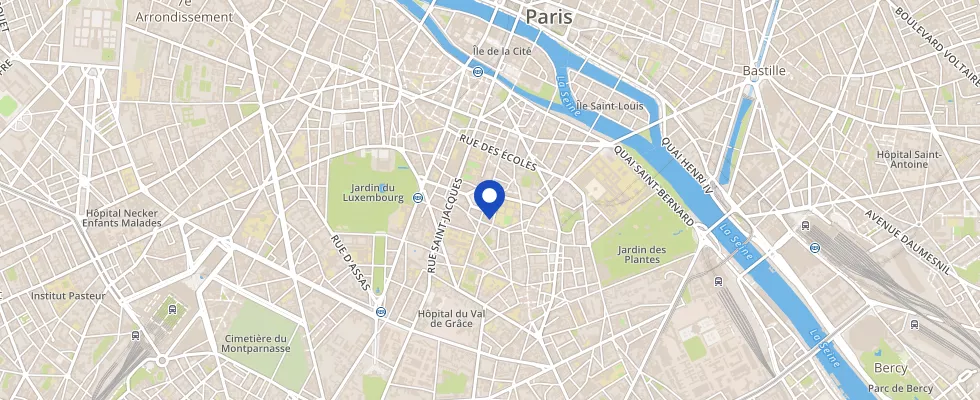The price of the Pantheon visit is € 11.50 for adults over 18 years old.
Pantheon of Paris Paris
-
E-ticket
-
Mobile tickets accepted
-
No booking fees
What to expect
To Great Men, the Grateful Nation
The inscription has adorned the front of the Pantheon since the French Revolution, a majestic neoclassical monument adorned with painted and sculpted decorations from the 19th century, proudly standing at the heart of the Latin Quarter. Explore its impressive nave, delve into its crypt, and pause in front of the great figures of the nation: Voltaire and Rousseau, as well as Victor Hugo and Emile Zola, are among the most renowned. Some may be unfamiliar to you, but all the figures enshrined within reflect the sensibilities of their time. Lastly, experience the wonderful reconstruction of the 1851 Foucault's Pendulum, which will captivate both young and old alike.
Panthéon Opening Hours
January 2 to March 31: open daily, from 10:00 AM to 6:00 PM
April 1 to September 31: open daily, from 10:00 AM to 6:30 PM
October 1 to December 31: open daily, from 10:00 AM to 6:00 PM
Closures: January 1, May 1, and December 25.
Last entry to the monument: 45 minutes before closing.
Colonnade tours are available from April to October. Tickets can be purchased at the monument's ticket counter.
Free Admission
- Under 18 (family and non-school group visitors)
- 18-25 years old (citizens of European Union countries and regular non-European residents in France)
- Disabled individuals and their companions
- Jobseekers with a certificate dated within the last 6 months
- Culture Card - ICOM Card
The Panthéon is free for all visitors on
- the first Sunday of each month, from November 1 to March 31
- during Heritage Days (the 3rd weekend of September)
Accessibility
The Panthéon is committed to making its visit accessible to everyone. Individuals with disabilities, as well as their companions, are granted free entry and can enjoy specially adapted guided tours upon presentation of valid documentation, such as the Mobility and Inclusion Card for French citizens. Various visitor assistance devices, including explanatory documents, wheelchair-accessible digital kiosks, digital biographical plaques, and audio guides for rent, are available to them. Measures have been taken to facilitate access, including a permanent ramp at the entrance and a lift platform to access the side aisles of the nave. However, please note that access to the crypt is challenging for individuals with reduced mobility due to a spiral or monumental staircase, making this area inaccessible to wheelchair users.
Temporary Exhibitions at the Panthéon in Paris
"We Could be Heroes" by Raphaël Barontin: from October 19, 2023, to February 11, 2024.
The Panthéon will soon host an exceptional exhibition titled "We Could be Heroes" by artist Raphaël Barontini, organized by the Centre des Monuments Nationaux. This exhibition, part of the "one artist, one monument" program, offers the artist carte blanche, promising a unique artistic experience at the heart of this iconic monument.
A Bit of History
In 1744, King Louis XV vowed to dedicate a prestigious building to Geneviève, the patron saint of Paris, a project entrusted to the architect Soufflot. In 1791, the monument was transformed into the National Panthéon, and Victor Hugo was buried there in 1885. Voltaire, Emile Zola, and Marie Curie would follow. From a church to a Republican Temple, the Panthéon has always remained a symbol, a sanctuary dedicated to great men.
Come and See the Earth Turn!
In the nave of the Panthéon, you'll find a replica of the Foucault Pendulum. In 1851, Foucault aimed to popularize science and demonstrate to the general public the Galilean principle that the Earth rotates on its axis and around the sun. The principle is simple: suspend a 40-kilogram sphere at the end of a 67-meter long piano wire and set it swinging on a fixed axis. You'll discover that with each swing, the pendulum doesn't return to its original position but slightly to the left. The pendulum is fixed; it's the Earth that is turning!
Did You Know?
Marie Curie, Nobel Prize winner in Chemistry for her work on polonium and radium, was interred in the Panthéon in 1995. To avoid radiation exposure, her coffin is lined with multiple layers of lead. Her body is exceptionally well-preserved due to the radiation she was exposed to during her lifetime.
Group quotation
Are you planning an event for a group of more than 10 people?
Map

75005 Paris

 Maubert-Mutualité
Maubert-Mutualité

 Luxembourg
Luxembourg

 Pantheon
Pantheon













